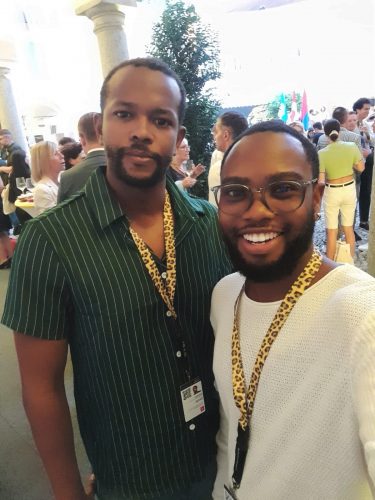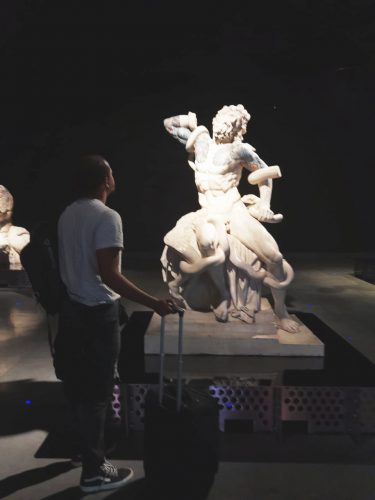“Eating Papaw on the Seashore” is at the Locarno Film Festival in Switzerland. The festival, which began on August 2 and ends on August 12, is in its 72nd year and has on its programme 214 films, along with forums for filmmakers and other attendees.
“Eating Papaw on the Seashore”, co-directed by Rae Wiltshire and Nickose Layne, joins several other films from this region showing at the prestigious festival, including two from Suriname.
During a conversation. I had asked a friend if Suriname produced films – she did not know. Days later, while in that country in transit to Switzerland, I saw a list which revealed two Surinamese filmmakers will be premiering their films at Locarno. Films from this region are hard to access because many of the countries in Latin America and the Caribbean do not have a large film industry. The films are never properly marketed and do not reach a wide audience. It is exciting that I will meet two filmmakers from Suriname.

From Suriname, my co-director and I travelled to Amsterdam in the Netherlands. At the airport, I noticed that tall people are not an anomaly. It was the first time in my life that I felt short. Most of the men at the airport were above 6’1 and towered above me. I was curious about this, so I googled “country with the tallest people in the world,” and sure enough, the Netherlands came up. It was confirmed. I was not exaggerating my experiences. The Netherlands also has a strong and vibrant cycling culture, with dedicated cycling lanes on red roads that keep cyclists separate from motor vehicle traffic. I couldn’t help but think about the number of fatalities that occur in Guyana involving cyclists and the potential benefits of having a cycling culture for our environment, people’s fitness, and the saving of lives with a better traffic management system that aims to protect cyclists in our country.
The next stop was Milan, Italy, a country famous for its artwork and the many renowned artists that have come from there, including Leonardo Da Vinci. At Malpensa Airport, art is on display providing an engaging experience. It is a great way to honour and respect one of the things the country is famous for.
From Milan, we travelled to our final destination Locarno, Switzerland (population about 16,000), where the entire city is marked by the leopard, which is part of its logo. The film festival, one of the biggest events of the year, is said to usually have some 8,000 guests.
A shuttle bus took us to the hotel, which is located on higher ground, providing a view of nothing but mountains and miles of greenery. I took it all in and felt excited and humbled that a film I made was selected by people who love cinema from around the world.

At the opening night ceremony, we met the organisers, who were thrilled to welcome us and excited to see a film showcasing Guyanese culture. The Locarno Film Festival, being one of the biggest film festivals in Europe and the world, has opened a door for filmmakers who possess talent but struggle due to the lack of proper respect for film in our country. Cinema should not be confined to one culture; it is a shared human experience that transcends cultures, and this is something that the Locarno Film Festival recognises, hence providing an opportunity for filmmakers who strive to tell an authentic Guyanese story.





